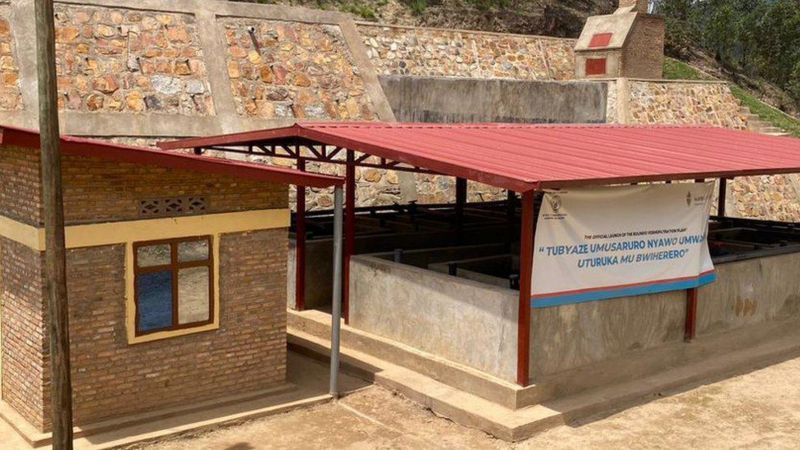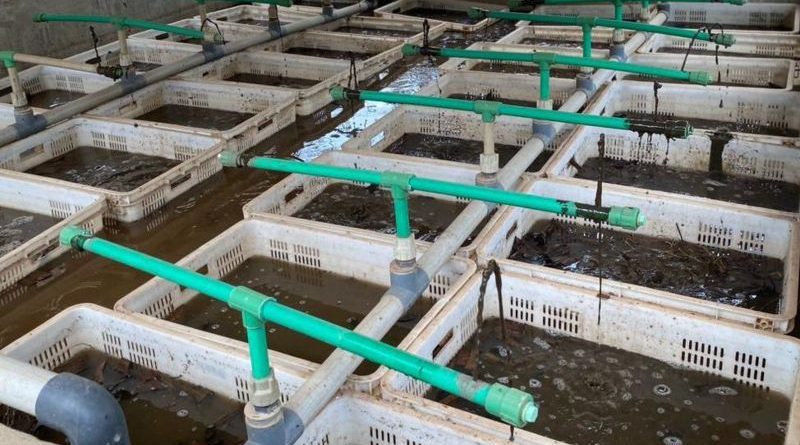Rwanda: Compost Derived from Toilets Provided to Boost Farmers
Rulindo district in the Northern Province of Rwanda has embarked on a pivotal project to promote sustainable agriculture, especially in areas where cultivating land has become increasingly challenging.
This initiative involves the implementation of composting toilets in farming practices, a strategy believed by experts to offer substantial benefits. These toilets are designed to seamlessly integrate waste composting into agricultural activities.
Elissa Rukundo, an employee of AGRUNI Ltd, a company actively engaged in this project, underscores the significance of utilizing composting toilets in the region.
He emphasizes, “In this district, there’s no waste that cannot be used for farming; there’s no waste that cannot be transformed into a resource.”
The project is concentrated on introducing composting toilets in communal areas within the Base sector of the Rulindo district, characterized by its lush hills and fertile land.
Rukundo acknowledges the challenges associated with this initiative but views it as a crucial step in addressing waste management issues and enhancing agricultural productivity.
Hee states, “This waste that people used to consider a problem has now become a solution. In these areas, we witness a high prevalence of water-related illnesses. Utilizing it in agriculture could be a game-changer for some.”
However, concerns exist regarding the acceptance of this approach among the local population. Farmers, such as Ancille Uwayezu, express curiosity and optimism about positive outcomes but also recognize potential resistance due to cultural beliefs.
Deputy Frank Habineza, representing a party focused on environmental issues, supports the initiative, emphasizing the benefits of proper waste management and its positive impact on agriculture. He stresses the need for careful implementation to align with local practices.
With an estimated cost reaching up to 200 million Rwandan francs, this project aims to convert waste into valuable resources, particularly in areas facing agricultural challenges.
The use of composting toilets has the potential to contribute to sustainable farming practices, but careful consideration of cultural and local factors is crucial for its success.
From an agroecology perspective, the use of composting toilets aligns with principles emphasizing sustainable and holistic agricultural practices.
These include nutrient cycling, soil health improvement, biodiversity promotion, local resource utilization, community engagement, resilience to climate change, and cultural sensitivity.
These aspects collectively contribute to the development of a sustainable and ecologically sound agricultural system.
In the final analysis, the introduction of composting toilets in the Rulindo district not only signifies a groundbreaking waste management initiative but also holds promise as a catalyst for restoring and rejuvenating soil health.
In embracing agroecology principles, the integration of composting toilets becomes a transformative tool for nutrient cycling, fostering soil biodiversity, and enhancing overall soil structure.
As these toilets contribute to the creation of nutrient-rich compost, they align perfectly with agroecological goals of sustainable farming, reducing dependence on external inputs and cultivating a harmonious relationship between agriculture and the environment.
The composting toilet initiative in Rulindo exemplifies a holistic approach that not only addresses immediate challenges but also sets the stage for a resilient, regenerative, and ecologically sustainable agricultural landscape.

Faeces and its utilisation as soil conditioner
One person produces appr. 100-200 g of faeces per day, the dry matter con tent of which is about 20% Human faeces contain very rich ecosystems of versatile micro-organisma. Bacterial numbers such as 10g lave been pre- sented (Ketchum 1988).
In addition, there are high numbers of viruses, pro tozoa and fungi. These micro-organisms are strictly or facultatively anaero hic and many of them cannot be cultivated. Thus the numbers presented are not at all accurate and microbiological numbers vary according to diet, moreo ver the microbial distribution in faeces is very uneven.
Many pathogens that enter the human body orally are enteric. They have been found to be excreted unevenly in faeces and many people without any dinical symptoms can be emitting pathogens. Human faeces are thus very lable to spread enteric micro-organians to other person.
From the point of view of hygiene, it is extremely important to avoid all circumstances where fresh, unhygienised faeces can contaminate human food, water, or other persons directly.
Raw or partly composted faeces have to be composted before use to avoid the spreading of possible pathogens. They are best composted with bio-waste and garden waste, as this way the carbon/nitrogen relation becomes opti mum.
The hio waste causes the microbe population to become varied and the composting process to speed up. Toilet waste has to be composted for at least six months, including summer months, before it is spread on the ground. (Salkinoja Salonen 1983)
The nutrient content and hygienic quality of composted toilet waste have been studied very little, which makes such waste more difficult to use. The usual way to utilise composted toilet waste is to spread it in the yard under bushes or on wasteland. Owing to biased attitudes towards composted fae ces, people rarely use it as soil conditioner or fertiliser for vegetables (Malkki l1997)
At present, composted toilet waste is of little significance as fertiliser or sod conditioner for households (Malkki et al. 1997). This fact is also sup ported by Hagalund and Olofsson (1997) in their research, according to which utilisation of the nutrients in sludge, urine, and toilet manure still functions poorly in Swedish eco villages.
Human exczeta are a valuable source of nutrients. Their use should be pru moted in order to replace some of the artificial fertilisers used in agriculture For the time being, there are many unanswered questions which need to be researched before human excreta can he widely used in plant production.
For agricultural purposes sewage sludge is the most important municipal waste in the Nordic countries. In order to increase the demand for sewage skunige and coruposted bio waste, their quality has to be improved to meet the requiements. Quality contrul has to be strict to assure the consumer that the use of a commposted product will not cause problems.
The nutrient cortent and hygiere of composted faeces and urine should be studied further to enable clear instructions for their use to be drafted. The utilisation of toilet waste is being hindered by prejudice and lack of Informa tion-only by efficient information can we influence public opinion.
The development of compesting and separating toilets should also be pro- moted in obtain functional, easy-to-use, and hygienic models to compele with fhush toilets. Many of the present models require too much time and trouble from their tuner, which no doubt seduces their popularity

